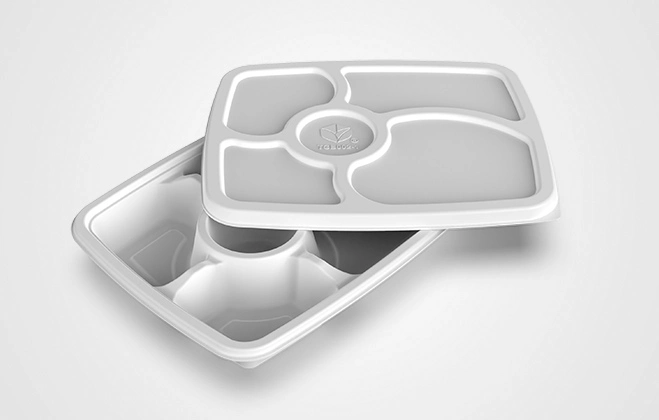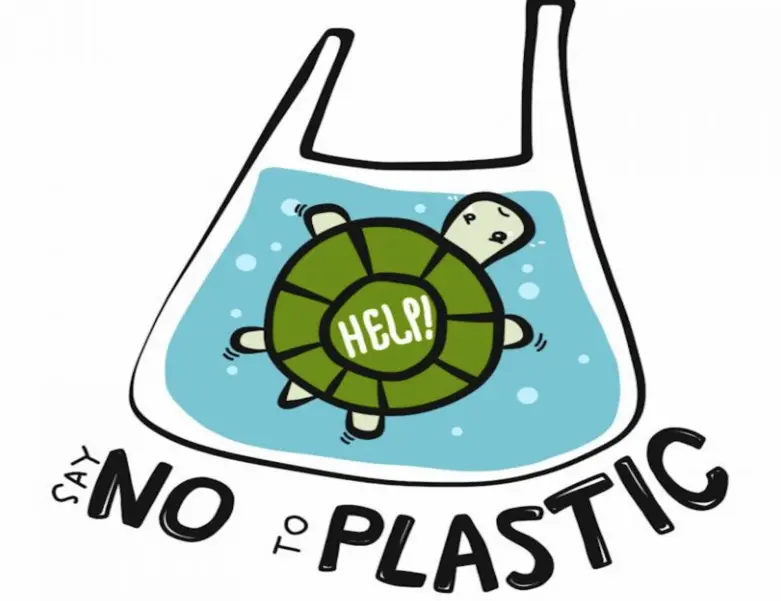What is polylactic acid?
Polylactic acid (PLA) is a new type of bio-based and renewable biodegradable material, which is made from starch raw materials proposed by renewable plant resources (such as corn, cassava, etc.).
The starch raw material is saccharified to obtain glucose, and then fermented from glucose and certain strains to produce high-purity lactic acid, and then chemical synthesis method is used to synthesize polylactic acid with a certain molecular weight.
Polylactic acid has good biodegradability. After use, it can be completely degraded by microorganisms in nature under specific conditions, and finally generates carbon dioxide and water, which does not pollute the environment. It is very beneficial to protect the environment and is recognized as an environmentally friendly material.
PLA
|
| Name | polylactic acid |
| Nickname | polylactide; PLA |
| Chemical Formula | (C3H4O2)n |
| Melting Point | 155-185°C |
| Density | 1.20-1.30 kg/L |
| CAS Accession Number | 26100-51-6 |
Polylactic acid, also known as polylactide, belongs to the polyester family. Polylactic acid is a polymer obtained by polymerizing lactic acid as the main raw material. The source of raw materials is sufficient and can be regenerated. It mainly uses corn and cassava as raw materials.
The production process of polylactic acid is pollution-free, and the product can be biodegraded to realize the cycle in nature, so it is an ideal green polymer material.

Polylactic acid has good thermal stability, processing temperature of 170 ~ 230 ℃, good solvent resistance, can be processed in various ways, such as extrusion, spinning, biaxial stretching, injection blow molding. In addition to being biodegradable, products made of polylactic acid have good biocompatibility, gloss, transparency, hand feel and heat resistance, as well as certain bacteria resistance, flame retardancy and UV resistance, so they are very useful. Widely used as packaging materials, fibers and nonwovens, etc., currently mainly used in clothing (underwear, outerwear), industry (construction, agriculture, forestry, papermaking) and medical and health fields.
The price of PLA before large-scale industrialization is $1000/kg. Later, large-scale production was realized through the industrialization research of the research group of Professor Ramani Narayan of Michigan State University.
The production of polylactic acid is still in the initial stage of development in my country. PLA has many applications and can be used in extrusion, injection molding, film drawing, spinning and other fields.
Preparation method of polylactic acid
In general, the preparation of polylactic acid (PLA) is synthesized from lactic acid as a raw material. There are many kinds of synthetic methods at present, the more mature is the direct polycondensation method of lactic acid, and the other is to synthesize lactide by lactic acid first, and then ring-opening polymerization under the effect of catalyst. There is also a solid-phase polymerization method.
01 Lactic acid direct polymerization method
The direct polymerization method has been studied as early as the 1930s and 1940s, but since the key technologies involved in the removal of water in the reaction cannot be well solved, the molecular weight of the products is low (all below 4000), Very low strength, easy to decompose, no practicality.
Showa Polymer Co., Ltd. of Japan adopts the method of slowly heating lactic acid in an inert gas and decompressing it slowly, so that the lactic acid is directly dehydrated and condensed, and the reactant is further polycondensed at 220~260 ° C and 133 Pa to obtain a molecular weight of more than 4000. Polylactic acid. However, the reaction time of this method is long, and the product will be aged, decomposed, discolored and uneven at a high temperature in the later stage. Japan's Mitsui Press Chemical Company uses the solution polymerization method to directly polymerize lactic acid to obtain polylactic acid.
The main feature of the direct method is that the synthesized polylactic acid does not contain a catalyst. Therefore, when the polycondensation reaction progresses to a certain extent, the system will appear in an equilibrium state. It needs to be heated and pressurized to break the reaction equilibrium, and the reaction conditions are relatively harsh. In recent years, through the innovation and improvement of technology, the direct polymerization method has made some progress, and it should be applied to large-scale industrial production in the near future as the technology continues to mature.
02 Ring opening polymerization
Ring-opening polymerization is the most widely used production method in the world. As early as the mid-20th century, DuPont researchers obtained high molecular weight polylactic acid by ring-opening polymerization. In recent years, foreign research on the synthesis of polylactic acid has mainly focused on the ring-opening polymerization of lactide.
The polylactic acid series products produced by Boeheringer Zngelhelm in Germany by this method appear on the market under the trade name; the polylactic acid produced by Cargill in the United States is processed by meltblown and spunbond to develop medical non-woven products; and There are only a handful of companies in my country that can synthesize polymer polylactic acid, such as the Institute of Polymer Research of Sun Yat-Sen University.
Ring-opening polymerization mostly uses stannous octoate as the initiator, the molecular weight can reach millions, and the mechanical strength is high. The polymerization and separation are carried out in two steps:
The first step is to obtain lactide through dehydration cyclization of polylactic acid;
The second step is to obtain polylactide by ring-opening polymerization of lactide;
However, this ring-opening polymerization method has extremely high requirements on the purity of the catalyst and the purity of the monomer during polymerization. Even a very small amount of impurities will make the molecular weight of PLA less than 100,000, and the polymerization conditions such as temperature, pressure, catalyst, etc. The type and amount of PLA, reaction time, etc. will also greatly affect the molecular weight of PLA, so the synthesis of high molecular weight PLA is a technical difficulty.
03 Solid state polymerization
This method is obtained by polymerizing the low molecular weight resin obtained by the direct polymerization method under the conditions of reduced pressure and vacuum and temperature between Tg and Tm, so as to increase its degree of polymerization and increase the molecular weight, thereby improving the strength and processing performance of the material.
The preparation process of polylactic acid
We mainly talk about the more commonly used ring-opening polymerization method, and its process is roughly as follows:
01 Based On
Shell crops such as corn are crushed to extract the starch, which is then made into unrefined glucose. Now many high technologies have overcome the process of grinding and extract raw materials directly from a large number of crops.
02 Fermentation
Glucose is fermented in a manner similar to the production of beer or alcohol, which becomes lactic acid similar to food added for use in human muscle tissue.
03 Intermediate Products
The lactic acid monomer is converted into an intermediate product - water-reduced lactic acid, namely lactide, by a special concentration process.
04 Aggregation
After the lactide monomer is vacuum purified, a solvent-free dissolution process is used to complete the ring-opening action to polymerize the monomer.
05 Polymer Modification
Due to the difference in the molecular weight and crystallinity of the polymer, the material properties can be greatly changed, so PLA is modified differently for different applications.
Application fields of polylactic acid
01 Biomedical field
In the field of biomedicine, polylactic acid materials can be used as drug transport materials, tissue engineering scaffold materials, bone repair materials, etc.
The medical field is an early field of application of PLA and its compounds. At present, extensive basic research and clinical applications have been carried out in the fields of orthopedic surgery, thoracic surgery, maxillofacial surgery, and tumor targeted therapy.
02 Industry and Agriculture
Polylactic acid has good plasticity, heat resistance and physical processing properties. It can be processed into agricultural mulch film to make up for the fragile and non-degradable defects of traditional mulch film. ropes, slow-release materials for pesticides and fertilizers, etc.

The degradability of ordinary polyethylene (PE) mulch film and polylactic acid mulch film was compared and studied, as well as the growth of cotton under different mulching films. It was found that polylactic acid mulch film began to degrade in about 20 days, and the degradation area can reach about 80% during the cotton harvest period. And the degradable plastic film showed better thermal insulation performance.
The effects of ordinary PE mulch film and polylactic acid (PLA) mulch film on watermelon planting were compared and studied. The test showed that PLA mulch film was degradable and would not cause environmental pollution. Covering PLA mulch film could promote the growth and development of watermelon.
03 Food Packaging Materials

Compared with polyethylene (Polyethylene, PE), polyvinyl chloride (PVC), polypropylene (Polypropylene, PP) and other materials, polylactic acid has good biodegradability, excellent antibacterial and antifungal properties.
Using PLLA-PVA-PCL composite film and nisin-added packaging materials for vacuum packaging of chilled meat, the shelf life of the packaged meat is much longer than that of PE cling film, and the meat is kept relatively well color and quality.

Under different gas conditions, the test results of unpackaged, PLA modified atmosphere packaging, PE modified atmosphere packaging, PLA vacuum packaging, and PE vacuum packaging on the fresh-keeping effect of carambola show that PLA film packaging bags can well preserve the appearance quality and nutritional group of carambola. points, extending the shelf life of star fruit.
Article source: Internet
If the article is not rigorous, I urge readers to correct it.
If there is any infringement, please contact the author.
 English
English 日本語
日本語 한국어
한국어 français
français Deutsch
Deutsch Español
Español русский
русский português
português العربية
العربية ไทย
ไทย Malay
Malay
























